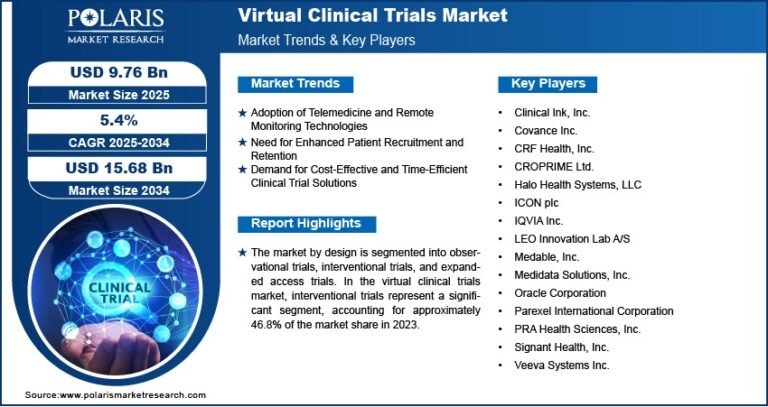Eye Tracking Market Projected to Reach USD 23,450.65 Million By 2034, Growing at a CAGR of 29.6%
The global Eye Tracking market was valued at USD 1,316.47 million in 2024 and is projected to grow from USD 1,754.07 million in 2025 to USD 23,450.65 million by 2034 , exhibiting a robust Compound Annual Growth Rate (CAGR) of 29.6% during the forecast period from 2025 to 2034 .
- Rising Adoption in Healthcare and Medical Research: Eye tracking technology is increasingly being used in diagnosing neurological disorders such as autism, Parkinson’s disease, and attention deficit hyperactivity disorder (ADHD), driving demand in the healthcare sector.
- Integration with Augmented Reality (AR) and Virtual Reality (VR): The growing use of eye tracking in AR/VR applications for gaming, training simulations, and immersive experiences is fueling market expansion, particularly in North America and Europe.
- Expansion into Automotive and Driver Monitoring Systems: Automotive manufacturers are integrating eye tracking systems to monitor driver alertness and reduce accidents, especially with the rise of semi-autonomous and autonomous vehicles.
- Growth in Human Behavior and Consumer Research: Eye tracking is widely adopted in marketing research, UX/UI design, and behavioral studies to understand consumer behavior, improve product designs, and enhance digital experiences.
- Advancements in AI and Machine Learning: Integration of artificial intelligence and machine learning with eye tracking systems enhances data accuracy, real-time analysis, and predictive capabilities, enabling broader applications across industries.
Market Size & Forecast
- Market Size in 2024 – USD 1,316.47 million
- Market Size in 2025 – USD 1,754.07 million
- Projected Market Size by 2034 – USD 23,450.65 million
- CAGR (2025–2034) – 29.6%
Eye tracking refers to the process of measuring where a person is looking, how their eyes move, and what captures their visual attention. This technology utilizes cameras, sensors, and software algorithms to detect eye movement and gaze points. It is widely used in various fields including healthcare, automotive, gaming, advertising, education, and human-computer interaction.
The market is experiencing rapid growth driven by advancements in sensor technology, increasing integration with smart devices, and rising demand for personalized user experiences. Additionally, the adoption of eye tracking in assistive technologies for people with disabilities is further boosting market potential.
Technological innovation continues to shape the future of the eye tracking industry. Companies are launching compact, high-precision eye trackers that can be embedded into smartphones, laptops, wearables, and vehicles. Strategic partnerships between tech firms and healthcare providers are accelerating the development of diagnostic tools based on eye movement analytics. As investment in AI, AR/VR, and autonomous systems grows globally, the eye tracking market is poised for exponential growth over the next decade.






